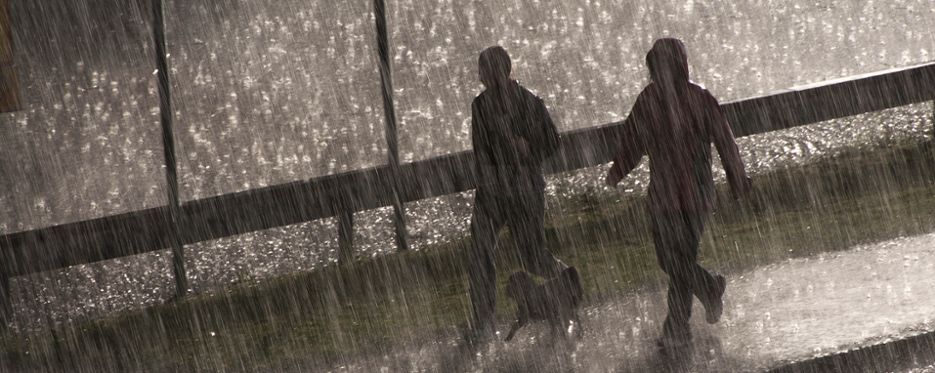Precipitation is a meteorological collective term for liquid or solid water particles that fall through the atmosphere.
Water on the Earth is constantly cycling. Water evaporates from oceans, lakes and the ground, forming water vapour. When this rises into the atmosphere, the water vapour condenses and forms clouds and precipitation. The precipitation that falls over the land continues, via the ground and groundwater, to lakes and watercourses on its way back to the sea.
Precipitation is of vital importance to our entire society. Agriculture, drinking water and physical planning are just a few examples of areas where this has an impact. Heavy precipitation can have negative consequences, such as flooded streets and roads, collapsed roofs and destroyed crops.
Precipitation varies across the country
Certain parts of Sweden have more precipitation than others. The western mountain regions normally experience the most. Other areas with high levels of precipitation include the western side of the South Swedish Highlands and an area some 100 kilometers in from the Norrland coast.
During the last thirty years, precipitation in Sweden has increased for the whole year, with the greatest increase in the summer. During the autumn, there has been both a weak increase and a weak reduction, depending on which part of the country is studied.
How will precipitation change?
The amount of change in the future will depend on greenhouse gas emissions around the world, and how quickly these emissions can be reduced. Different types of development can be studied using climate scenarios.
These climate scenarios mainly suggest a future climate with more precipitation in northern Sweden, particularly during the winter. For southern Sweden, however, no increase in precipitation is expected.
The climate scenarios also suggest stronger extremes in precipitation, both in the short term in the form of downpours and in connection with low pressure situations with large amounts of precipitation over longer periods.
Snow conditions depend on both winter precipitation and the temperature. With rising temperatures, the snow season will therefore be shorter and the maximum snow cover will be less thick, despite increased winter precipitation.
The scientific basis
International research on the climate and its development is compiled every year by the UN Intergovernmental Panel on Climate Change (IPCC). These summaries form an important basis for negotiations and for different types of decisions within society. The next summary will be complete in 2021.
